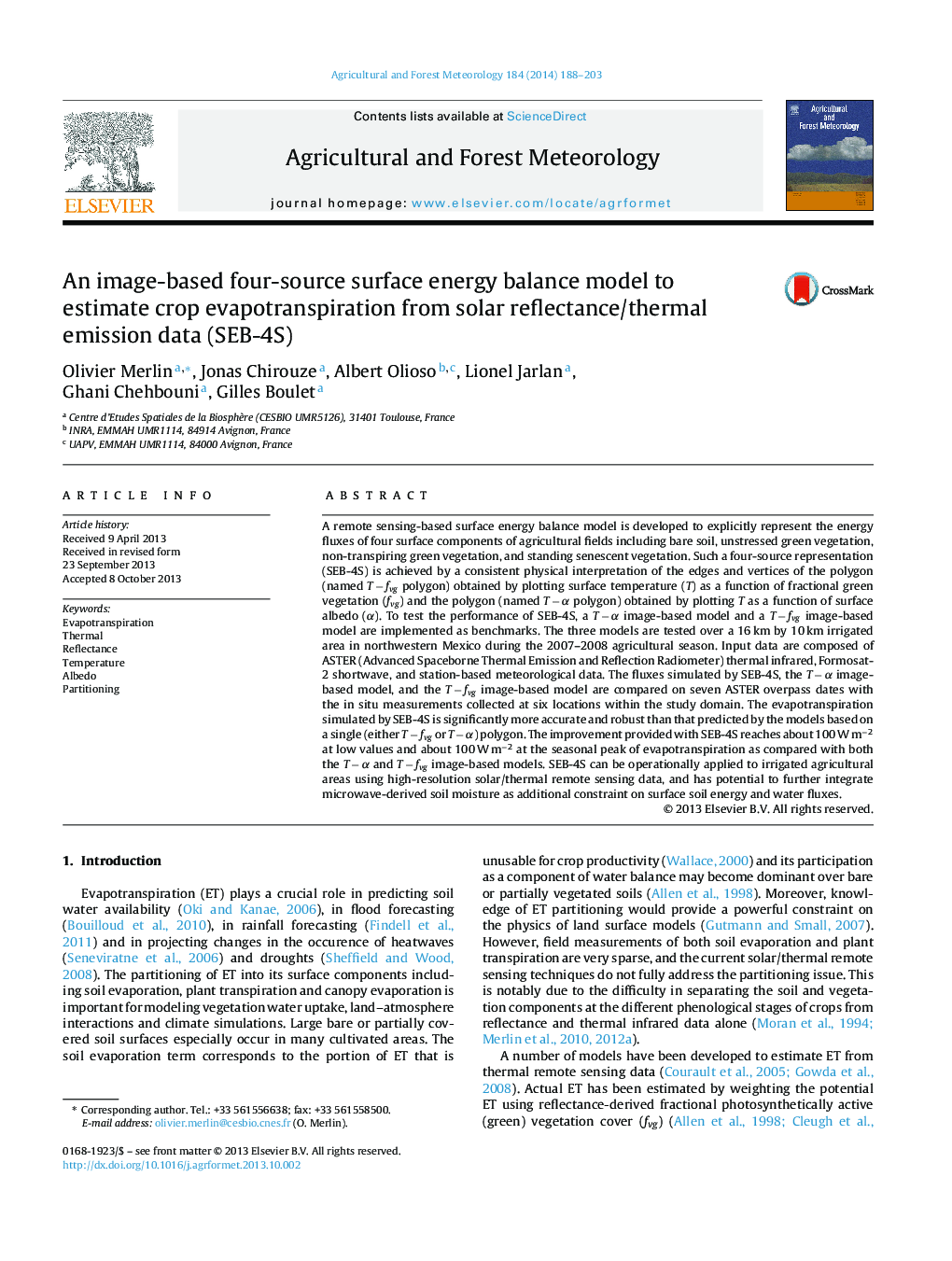| Article ID | Journal | Published Year | Pages | File Type |
|---|---|---|---|---|
| 6537700 | Agricultural and Forest Meteorology | 2014 | 16 Pages |
Abstract
A remote sensing-based surface energy balance model is developed to explicitly represent the energy fluxes of four surface components of agricultural fields including bare soil, unstressed green vegetation, non-transpiring green vegetation, and standing senescent vegetation. Such a four-source representation (SEB-4S) is achieved by a consistent physical interpretation of the edges and vertices of the polygon (named T â fvg polygon) obtained by plotting surface temperature (T) as a function of fractional green vegetation (fvg) and the polygon (named T â α polygon) obtained by plotting T as a function of surface albedo (α). To test the performance of SEB-4S, a T â α image-based model and a T â fvg image-based model are implemented as benchmarks. The three models are tested over a 16 km by 10 km irrigated area in northwestern Mexico during the 2007-2008 agricultural season. Input data are composed of ASTER (Advanced Spaceborne Thermal Emission and Reflection Radiometer) thermal infrared, Formosat-2 shortwave, and station-based meteorological data. The fluxes simulated by SEB-4S, the T â α image-based model, and the T â fvg image-based model are compared on seven ASTER overpass dates with the in situ measurements collected at six locations within the study domain. The evapotranspiration simulated by SEB-4S is significantly more accurate and robust than that predicted by the models based on a single (either T â fvg or T â α) polygon. The improvement provided with SEB-4S reaches about 100 W mâ2 at low values and about 100 W mâ2 at the seasonal peak of evapotranspiration as compared with both the T â α and T â fvg image-based models. SEB-4S can be operationally applied to irrigated agricultural areas using high-resolution solar/thermal remote sensing data, and has potential to further integrate microwave-derived soil moisture as additional constraint on surface soil energy and water fluxes.
Related Topics
Physical Sciences and Engineering
Earth and Planetary Sciences
Atmospheric Science
Authors
Olivier Merlin, Jonas Chirouze, Albert Olioso, Lionel Jarlan, Ghani Chehbouni, Gilles Boulet,
